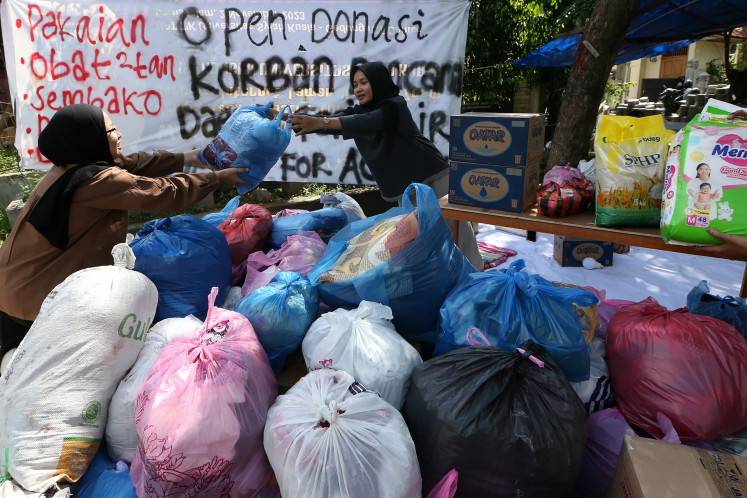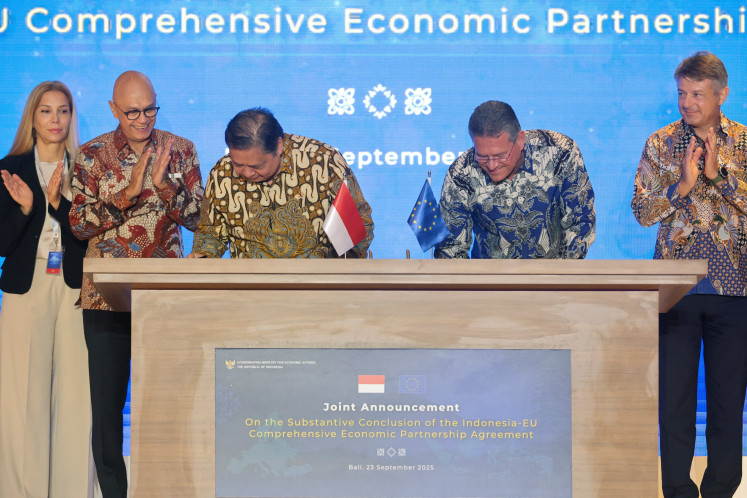Popular Reads
Top Results
Can't find what you're looking for?
View all search resultsPopular Reads
Top Results
Can't find what you're looking for?
View all search resultsRegional development banks should boost local economies
Regional development banks (BPD) are to boost their contributions to stimulating the economy in the regions, to provide alternative liquidity sources amidst the global financial crisis
Change text size
Gift Premium Articles
to Anyone
Regional development banks (BPD) are to boost their contributions to stimulating the economy in the regions, to provide alternative liquidity sources amidst the global financial crisis.
“BPDs have so far been acting as a cashier to regional government. With huge regional government funds placed in BPDs, the banks should have moved more actively to support regional development,” Finance Ministry director general of financial balance Mardiasmo said in a seminar Thursday.
He said BPDs should allocate more funds to the real sector, such as infrastructure building and also micro-lending, generating growth, instead of simply placing their funds in the financial sector.
As of December 2008, BPD funds placed in central bank certificates (SBI) reached Rp 24 trillion (US$2.11 billion), and in bonds were Rp 9.3 trillion.
Last year, the ministry transferred Rp 290 trillion, or 33 percent of the state budget, to regional governments, with 94.8 percent of these funds going through BPDs.
This year, the figure has been raised to Rp 320 trillion.
Such a huge amount can be used to spur growth in the regions while many commercial banks are facing a liquidity squeeze.
Bank Indonesia (BI) deputy governor Siti Ch. Fadjriah said that if BPDs and regional governments could harmonize their objectives then regional economies would grow even faster.
To support BPDs, Mardiasmo said, regional governments, as the banks’ stakeholders, should inject capital and provide financing to the BPDs. (hdt)










